SpaceX Dragon Launches NASA Cargo to Space Station, Aces Predawn Rocket Landing
The Dragon cargo capsule will arrive at the orbiting lab on Monday morning (May 6).
CAPE CANAVERAL, Fla. — SpaceX successfully launched its 17th commercial cargo mission to the International Space Station today (May 4), then stuck a rocket landing on a ship at sea.
Following a series of delays over the past week, a two-stage SpaceX Falcon 9 rocket — named after the iconic ship in Star Wars (the Millennium Falcon) — lifted off at 2:48 a.m. EDT (0648 GMT) from Cape Canaveral Air Force Station here, lighting up the predawn sky as it carried the company's robotic Dragon cargo capsule toward the orbiting lab.
As the Falcon 9 roared to life, creating a brilliant orange fireball as it ascended in the sky. Just over 2 minutes after liftoff, the rocket’s first stage separated and relit three of its nine engines to head back to Earth, illuminating a stunning exhaust plume — resembling a planetary nebula — in the morning sky. The rocket then streaked meteorlike across the sky as its engines shut off again.
Related: How SpaceX's Falcon 9 Rocket Landings Work (Infographic)
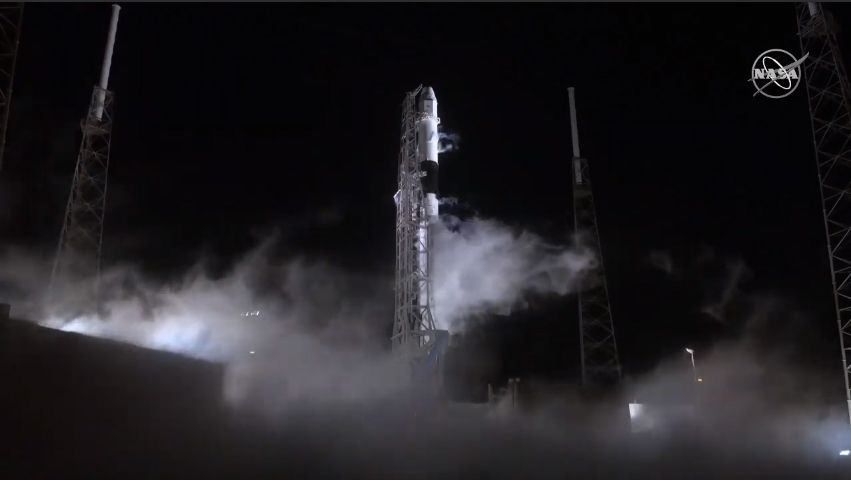
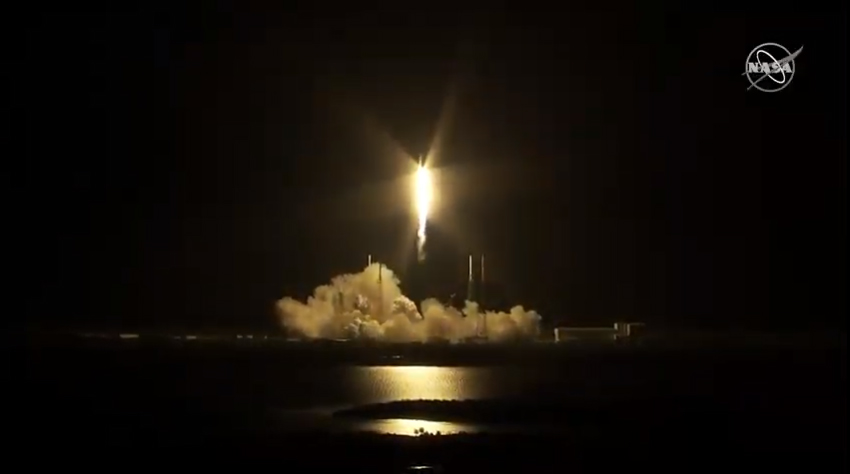
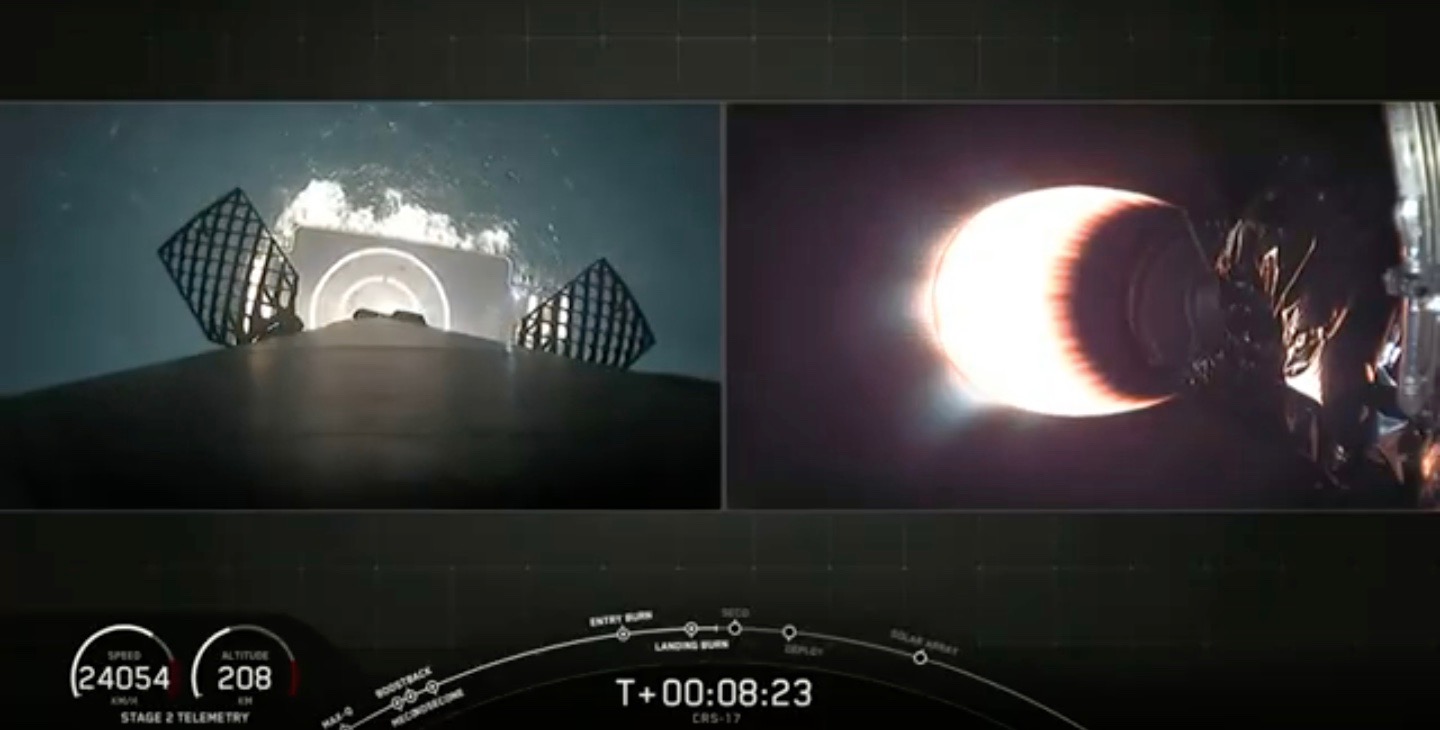
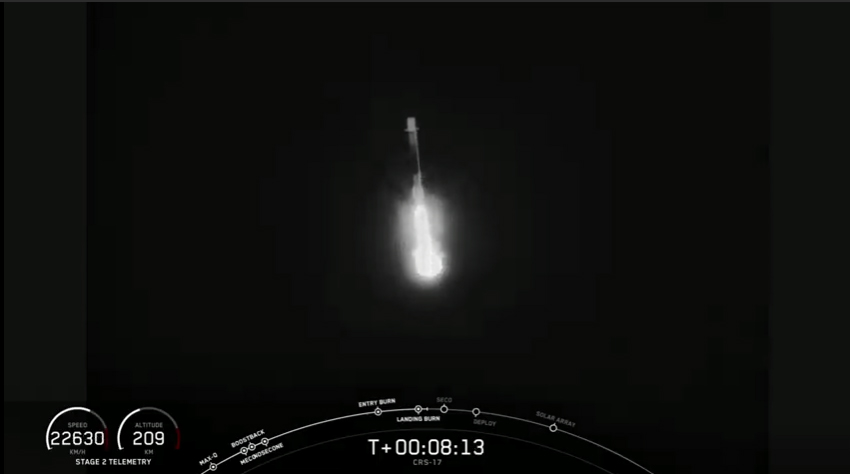
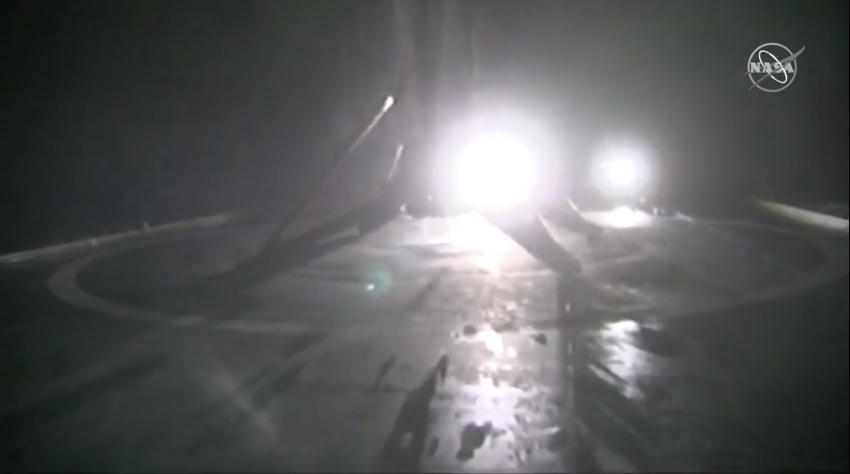

The Falcon 9’s first stage booster conducts three distinct burns during its landing process, and all three were visible against the clear night sky. Cheers erupted from spectators at a viewing site as the booster landed on the SpaceX drone ship Of Course I Still Love You in the Atlantic Ocean, just off the Florida coast.
Today’s mission is the sixth overall to feature a preflown Dragon; this capsule also flew on the CRS-12 resupply mission in August 2017. Its previous success is one reason NASA and SpaceX deemed the spacecraft ok to fly after its crew-carrying counterpart exploded during a routine test on April 20.
But that accident forced SpaceX to rethink its landing plans. The company originally intended for the Falcon 9's first stage to touch down at its designated landing area at Cape Canaveral, Landing Zone-1.
Get the Space.com Newsletter
Breaking space news, the latest updates on rocket launches, skywatching events and more!
LZ-1 is adjacent to the test stand that hosted the doomed Crew Dragon capsule, and SpaceX is still conducting its investigation into the explosion. So, SpaceX decided to move this morning's landing attempt 12 miles (20 kilometers) offshore, on the drone ship "Of Course I Still Love You."

This was the closest to shore a drone ship has caught a rocket to date, and onlookers were treated to a dazzling view as the booster fired its engines to land. SpaceX officials warned residents beforehand that sonic booms could echo overhead as the booster made the downward trek through the atmosphere.
An electrical issue with the drone ship, by the way, pushed the launch from yesterday (May 3) to today.
Just like with December’s CRS-16 mission, the rocket featured in today’s flight was a shiny new Falcon 9. According to Hans Koenigsmann, SpaceX’s vice president of flight reliability, this does not signal a company trend away from rocket reuse.
"It's interesting to see how things have changed in the world of space," Koenigsmann said during a prelaunch news briefing Thursday (May 2). People now ask why SpaceX is flying new rockets when they once questioned why the company would fly used ones, he noted.
Reusability is key to SpaceX's long-term vision, which involves making ambitious exploration feats feasible by slashing the cost of spaceflight. But occasionally, the company needs to build new boosters to replenish its fleet. In May 2018, SpaceX introduced a souped-up version of its flagship Falcon 9 rocket. This more powerful "Block 5" variant features an 8% increase in power over its predecessors.
In addition to the extra thrust, the beefed-up Falcon 9 also features a plethora of upgrades, all of which help facilitate reusability. Company founder and CEO Elon Musk has said that, while previous iterations of the Falcon 9 were meant to fly only two to three times, the Block 5 can launch as many as 10 times with virtually no refurbishment between flights.
To that end, engineers developed a slick upgrade package for the Falcon 9, featuring improved engines, a more durable interstage (the piece that connects the rocket's two stages), titanium grid fins and a new thermal protection system. These changes help the rocket better handle the stresses of launch and have enabled the company to establish an ever-growing fleet of flight-proven rockets.
Tucked inside the Dragon that launched today is a smorgasbord of science experiments, crew supplies, and hardware — more than 5,500 lbs. (2,495 kilograms) in total. One such experiment, which is nestled inside the Dragon’s trunk, is the Orbiting Carbon Observatory-3. This instrument, which will be installed on the station’s exterior via robotic arm, will measure atmospheric carbon dioxide and map sources and sinks of the gas as the space station soars above the Earth.
Also on board is a series of investigations involving tissue chips, which are used to simulate human organs. Researchers are hopeful that the chips will help scientists better understand the effects of microgravity on the human body.
Dragon is also bringing a new reconfigurable, on-orbit facility, dubbed Hermes, that will be able to accommodate investigations into asteroid and comet formation, impact dynamics and planetary evolution.
This cargo delivery also includes the latest installment in the student-designed Genes in Space mission, Genes in Space-6. This iteration will track how yeast DNA repairs itself during spaceflight. Yeast DNA will be broken using CRISPR-Cas9 gene editing, and the resulting repairs and mutations that occur will be assessed while in space.
If all goes according to plan, the space station’s robotic arm will capture Dragon around 7 a.m. EDT (1100 GMT) on Monday (May 6), and the capsule will be installed about two hours later. Dragon will remain on station for roughly a month before it departs for a splashdown in the Pacific Ocean, returning valuable science to researchers here on Earth.
- In Photos: SpaceX's Dragon CRS-16 Cargo Launch and Rocket 'Water Landing'
- SpaceX's Falcon 9: Rocket for the Dragon
- 6 Fun Facts About Private Rocket Company SpaceX
Follow Amy Thompson on Twitter @astrogingersnap. Follow us on Twitter @Spacedotcom or Facebook.
Join our Space Forums to keep talking space on the latest missions, night sky and more! And if you have a news tip, correction or comment, let us know at: community@space.com.

Amy Thompson is a Florida-based space and science journalist, who joined Space.com as a contributing writer in 2015. She's passionate about all things space and is a huge science and science-fiction geek. Star Wars is her favorite fandom, with that sassy little droid, R2D2 being her favorite. She studied science at the University of Florida, earning a degree in microbiology. Her work has also been published in Newsweek, VICE, Smithsonian, and many more. Now she chases rockets, writing about launches, commercial space, space station science, and everything in between.









